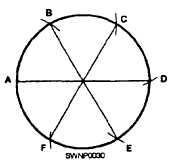
Figure 2-12. - Two methods used to divide a line into equal parts.
point A, draw a straight line tangent to the arc that is below point B. Do the same from point B. With the dividers set at any given distance, start at point A and step off the required number of spaces along line AD using tick marks-in this case, six. Number the tick marks as shown. Do the same from point B along line BC. With the straightedge, draw lines from point 6 to point A, 5 to 1, 4 to 2, 3 to 3, 2 to 4, 1 to 5, and B to 6. You have now divided line AB into six equal parts.
When the method shown in view B of figure 2-12 is used to divide a line into a given number of equal parts, you will need a scale. In using this method, draw a line at right angles to one end of the base line. Place the scale at such an angle that the number of spaces required will divide evenly into the space covered by the scale. In the illustration (view B, fig. 2-12) the base line is 2 1/2 inches and is to be divided into six spaces. Place the scale so that the 3 inches will cover 2 1/2 inches on the base line. Since 3 inches divided by 6 spaces = 1/2 inch, draw lines from the 1/2-inch spaces on the scale perpendicular to the base line. Incidentally, you may even use a full 6 inches in the scale by increasing its angle of slope from the baseline and dropping perpendiculars from the full-inch graduation to the base line.
To divide or step off the circumference of a circle into six equal parts, just set the dividers for the radius of the circle and select a point of the circumference for a beginning point. In figure 2-13, point A is selected for a beginning point. With A as a center, swing an arc through the circumference of the circle, like the one shown at B in the illustration. Use B, then, as a point, and swing an arc through the circumference at C.
Continue to step off in this manner until you have divided the circle into six equal parts. If the points of intersection between the arcs and the circumference are connected as shown in figure 2-13, the lines will intersect at the center of the circle, forming angles of 60 degrees.
If you need an angle of 30 degrees, all you have to do is to bisect one of these 60-degree angles by the method described earlier in this chapter. Bisect the 30-degree angle and you have a 15-degree angle. You can construct a 45-degree angle in the same manner by bisecting a 90-degree angle. In all probability, you will have a protractor to lay out these and other angles. But just in case you do not have a steel square or protractor, it is a good idea to know how to construct angles of various sizes and to erect perpendiculars.
Many times when laying out or working with circles or arcs, it is necessary to determine the circumference of a circle or arc. For the applicable mathematical formula, refer to appendix II of this text.
Circumference Rule
Another method of determining circumference is by use of the circumference rule. The upper edge of the circumference rule is graduated in inches in the same manner as a regular layout scale, but the lower edge is graduated, as shown in figure 2-14. The lower edge gives you the approximate circumference of any circle within the range of the rule. You will notice in figure 2-14 that the reading on the lower edge directly below the 3-inch mark is a little over 9 3/8 inches. This

Figure 2-13. - Dividing a circle into six equal parts

Figure 2-14. - Circumference rule.
Continue Reading